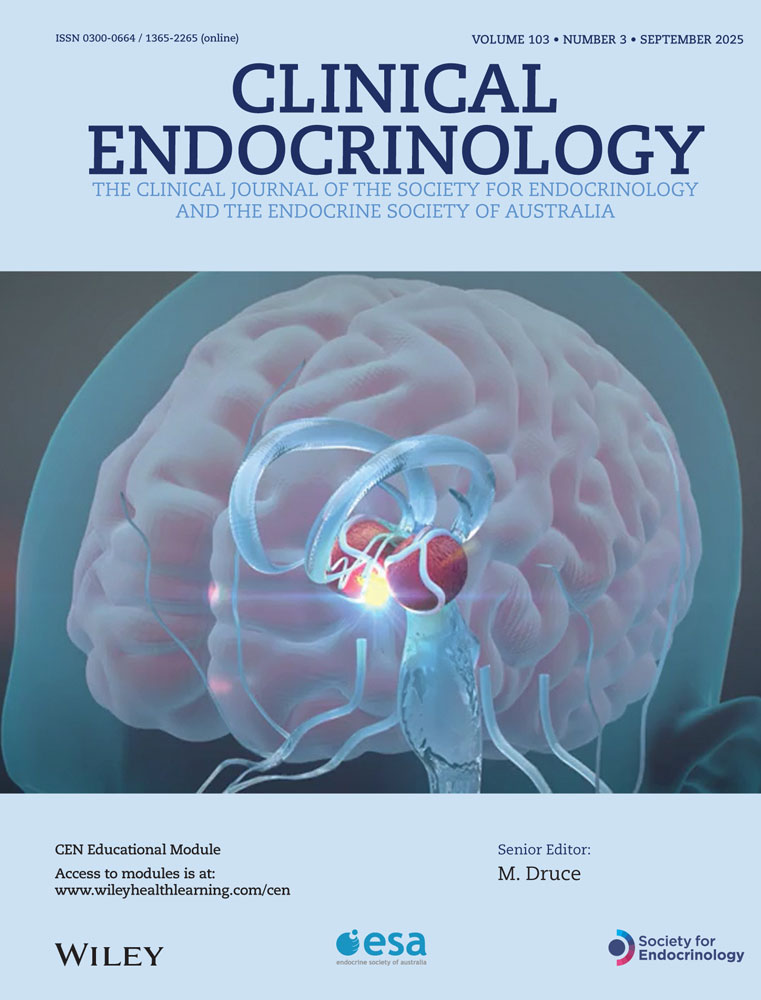Effect of Sandostatin® LAR® on sleep apnoea in acromegaly: correlation with computerized tomographic cephalometry and hormonal activity
Abstract
OBJECTIVES Sleep apnoea has been reported to occur in subjects with acromegaly. This study evaluates the relationship among biochemical activity, sleep apnoeic activity and upper airway anatomic profile in acromegaly, and the effect of Sandostatin® LAR®, a long-acting somatostatin analogue, on these parameters.
PATIENTS Fourteen subjects with acromegaly were recruited.
MEASUREMENTS Subjects were assessed at baseline and those with apnoea-hypopnoea index (AHI) ≥ 5 were reassessed after 6 months of treatment with Sandostatin® LAR® 20–30 mg IMI 4-weekly. Biochemical activity was assessed with levels of GH and IGF-1. Sleep disordered breathing was assessed with overnight polysomnography. Upper airway anatomic profile was defined with computerized tomographic cephalometry.
RESULTS Of 14 subjects (age 42·0 ± 8·1 years, mean ± SD; 11 men) at baseline, there was a positive correlation between GH and tongue length (VT; P = 0·004), and between AHI and cephalometric indices: length of soft palate (PMU; P = 0·002); mandibular plane-hyoid bone distance (MPH; P = 0·017), maximum thickness of soft palate (Max-SP; P = 0·018) and VT (P = 0·027). Eight patients had sleep disordered breathing (AHI ≥ 5) which was predominantly obstructive in nature (AHI = 29·4 ± 22·6). After treatment, there were significant improvements in hormonal profile: GH, mU/l (before, 51·5 ± 27·8; after, 8·0 ± 7·4; P = 0·017) and IGF-1, nmol/l (before, 95·5 ± 23·4; after, 35·0 ± 12·4; P = 0·012); sleep-disordered breathing: AHI (before, 29·4 ± 22·6; after, 13·4 ± 11·12; P = 0·025), snoring episodes (before, 486 ± 240; after, 165 ± 170; P = 0·05); cephalometric indices, mm: MPH (before, 18·8 ± 12·1; after, 14·8 ± 8·4; P = 0·018), VT (before, 72·3 ± 4·4; after, 69·7 ± 4·3; P = 0·05). There was a positive correlation between the reduction in GH and AHI (r = 0·738, P = 0·037).
CONCLUSIONS The findings demonstrated that there was correlation between sleep apnoea severity and soft tissue overgrowth at the upper airway region in acromegaly. They also suggest that Sandostatin® LAR® improved obstructive sleep apnoea in acromegaly, and the effect might be partly mediated via a reduction in upper airway soft tissue, in particular that of the tongue, concomitant with a reduction in GH levels.




